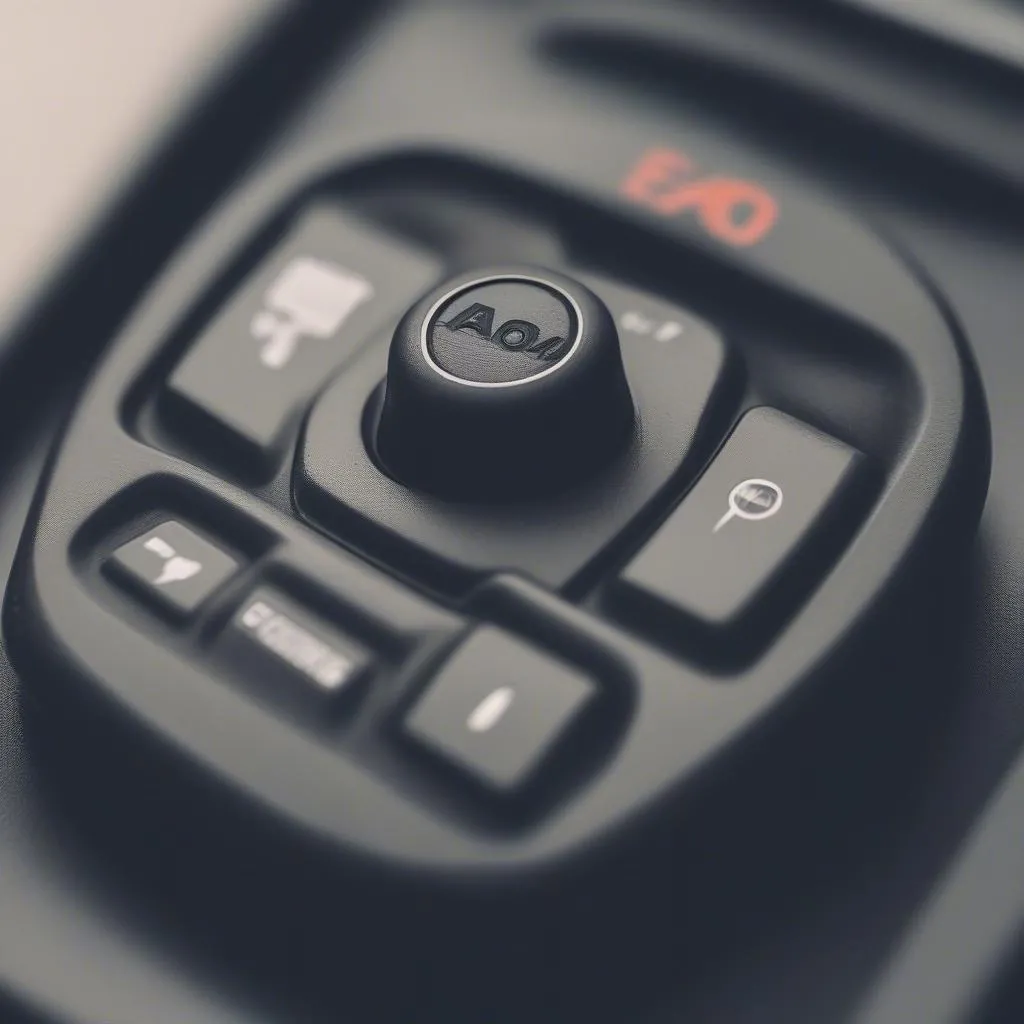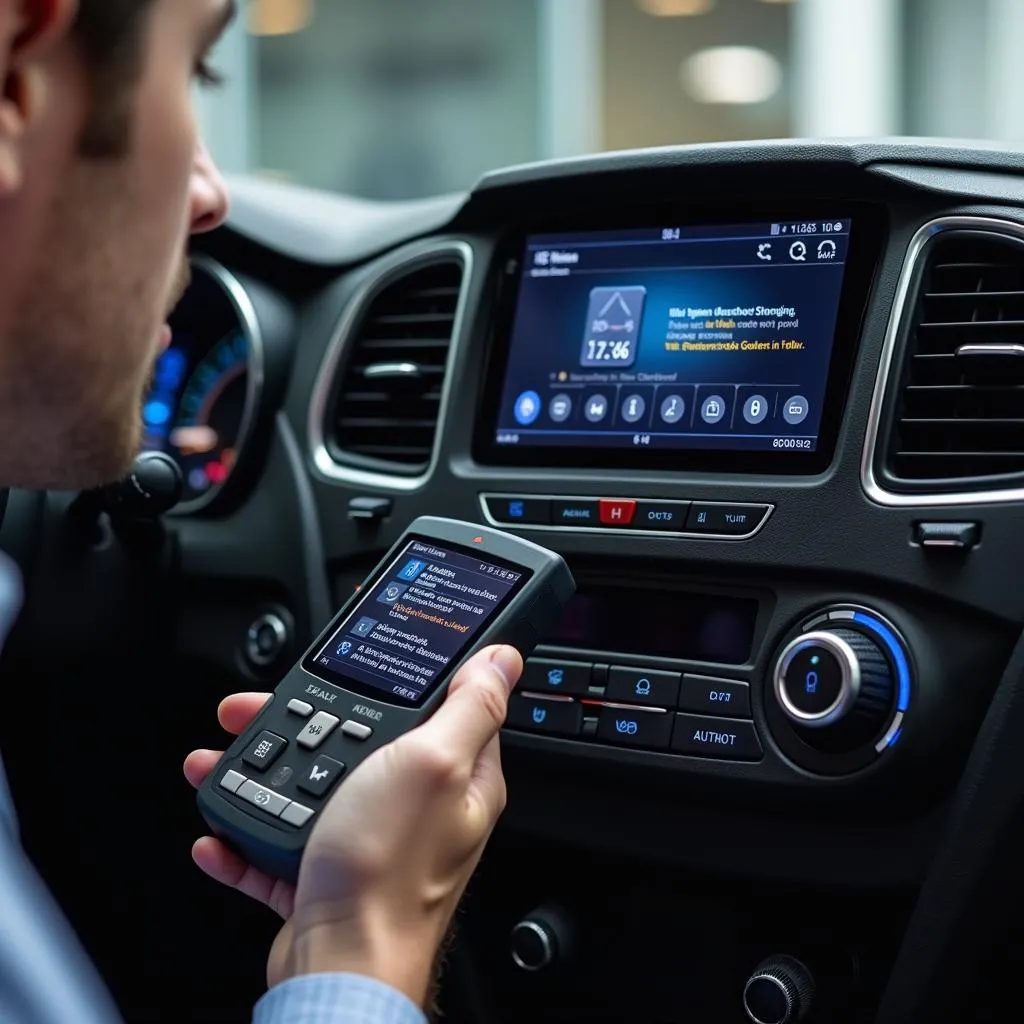Seeing a brake warning light illuminated on your dashboard can be a nerve-wracking experience. If your 2013 Mazda CX-5 is displaying this warning, it’s crucial to address the issue promptly. This article will guide you through the potential causes and solutions, empowering you to take appropriate action.
Understanding Your CX-5’s Brake System
Before delving into the causes of a brake warning light, it’s helpful to understand the basics of your CX-5’s braking system. The system comprises several components working in harmony to slow down and stop your vehicle. These components include:
- Brake Pedal: The pedal you press to activate the brakes.
- Brake Booster: Amplifies the force you apply to the brake pedal, making it easier to stop.
- Master Cylinder: A hydraulic pump that pushes brake fluid through the brake lines when you press the pedal.
- Brake Lines: These carry brake fluid to the calipers.
- Brake Calipers: House the brake pads and push them against the rotors to create friction and slow the vehicle.
- Brake Rotors (Discs): Metal discs connected to the wheels. Friction between the pads and rotors slows the vehicle.
Common Causes of Brake Warning Lights
Several issues can trigger the brake warning light in your 2013 CX-5. Let’s explore some of the most prevalent culprits:
1. Low Brake Fluid Level
Brake fluid is the lifeblood of your braking system. If the fluid level drops too low, it can hinder the system’s ability to generate adequate pressure, causing the warning light to illuminate.
Possible Reasons for Low Brake Fluid:
- Brake Pad Wear: As your brake pads wear down, the caliper pistons need to extend further to compensate. This extension requires more brake fluid, potentially leading to a low fluid level.
- Brake Fluid Leak: A leak anywhere in the brake system can cause a drop in fluid level.
2. Worn Brake Pads
Brake pads are designed to wear down over time. When they reach a certain thinness, a wear indicator, often a small metal tab, contacts the rotor, creating a high-pitched squealing sound. This contact also triggers the brake warning light, signaling it’s time for a replacement.
3. Faulty Brake Light Switch
The brake light switch is a small sensor located near the brake pedal. It signals the brake lights to activate when you press the pedal. A malfunctioning brake light switch can disrupt this signal, leading to the brake warning light turning on, even if your brake system is functioning correctly.
4. ABS Issue
Modern vehicles, including your 2013 CX-5, are equipped with an Anti-lock Braking System (ABS). The ABS prevents wheel lock-up during hard braking, improving vehicle control and stability. If the ABS system encounters a malfunction, it can trigger the brake warning light.
5. Other Potential Issues
While less common, other issues, such as a faulty brake booster, master cylinder problems, or issues with the electronic brake control module (EBCM), can also illuminate the brake warning light.
What to Do When Your Brake Warning Light Comes On
1. Stop Safely
If the brake warning light comes on while driving, find a safe location to pull over as soon as possible. Avoid sudden braking and be cautious of other vehicles.
2. Check Brake Fluid
Once parked safely, turn off the engine and locate your CX-5’s brake fluid reservoir. Refer to your owner’s manual for its exact location. Carefully open the reservoir cap. If the fluid level is low, add the appropriate brake fluid (DOT 3 or DOT 4, as recommended by Mazda) until it reaches the “Max” line. Be sure to use clean brake fluid from a sealed container.
3. Inspect for Leaks
While checking the brake fluid, look for any signs of leaks around the reservoir, brake lines, and near the wheels. If you notice any leaks, it’s crucial to have the vehicle towed to a qualified mechanic immediately.
4. Listen for Unusual Noises
Start your CX-5 and listen for any unusual noises while applying the brakes, such as grinding or scraping. These sounds could indicate severely worn brake pads or other mechanical issues.
5. Seek Professional Diagnosis
If you’re unsure about the cause of the brake warning light or notice any leaks, unusual noises, or changes in brake pedal feel, it’s essential to have your vehicle towed to a qualified mechanic for a thorough inspection and diagnosis.
Remote Diagnostics and Repair: A Modern Solution
In today’s technologically advanced world, remote diagnostics and software solutions have revolutionized automotive repair. If you’re experiencing brake warning light issues, seeking assistance from a qualified remote diagnostics provider can be a convenient and efficient solution. These experts can remotely connect to your vehicle’s onboard computer system, diagnose the problem, and, in some cases, even resolve software-related issues remotely.
Benefits of Remote Diagnostics:
- Convenience: Avoid the hassle of towing your vehicle to a shop.
- Speed: Remote diagnostics can often be performed quicker than traditional methods.
- Accuracy: Advanced software tools provide precise diagnoses.
- Software Solutions: Remotely address software glitches and programming errors.
Conclusion
Ignoring a brake warning light can lead to dangerous driving conditions. If you’re experiencing this issue with your 2013 Mazda CX-5, taking prompt action is crucial. By understanding the common causes and seeking professional assistance when necessary, you can ensure your safety on the road. Consider exploring the benefits of remote diagnostics and software solutions for a modern and efficient approach to resolving brake warning light issues.


